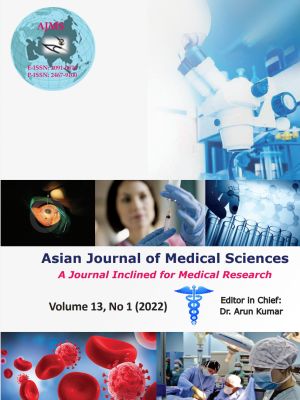A study on outcome of controlled ovarian hyperstimulation and intrauterine insemination (husband) in a medical college in Kolkata
Keywords:
Intrauterine insemination, Ovulation induction, Clomiphene, Success rate, Letrozole, Gonadotrophin, Controlled ovarian hyperstimulationAbstract
Background: A combination of controlled ovarian hyperstimulation and intrauterine insemination (IUI) remains an important treatment option for couple having infertility. Success rate of IUI with ovulation induction ranges from 8-20% depending on many factors.
Aims and Objectives: To assess the factors affecting the success rate of IUI and to evaluate the success of ovulation Induction by different methods of controlled stimulation protocol.
Materials and Methods: It is a duration-based prospective cross-sectional study where total of 67 couples were included by inclusion and exclusion criteria. They underwent 90 cycles of IUI with each couple having a maximum of three cycles. Ovulation induction was done by clomiphene citrate or letrozole or gonadotrophins. Semen preparation was done by density gradient method. The outcome
was measured by positive urine pregnancy test. Range, percentage, confidence interval, mean with standard deviation, median, range, and P-value were calculated. P<0.05 was taken as statistically significant.
Results: Out of 90 IUI cycles 8 were successful resulting in a success rate of 8.8% per cycle and 11.9% per couple. Factors that had a positive impact were follicle size >21 sqmm, endometrial thickness >9 mm, post wash count >15 million/ml, >2 cycles of IUI and on the number of follicles 2 or more on the day of trigger.
Conclusion: The study concluded that IUI after ovulation induction can be a simple and safe cost-effective procedure in selected group of infertile couple. Clinical significance IUI following ovulation induction can be a successful approach for specific indications in a low-resource setting where options for other ART interventions are absent or limited.
Downloads
Downloads
Published
How to Cite
Issue
Section
License
Copyright (c) 2021 Asian Journal of Medical Sciences

This work is licensed under a Creative Commons Attribution-NonCommercial 4.0 International License.
Authors who publish with this journal agree to the following terms:
- The journal holds copyright and publishes the work under a Creative Commons CC-BY-NC license that permits use, distribution and reprduction in any medium, provided the original work is properly cited and is not used for commercial purposes. The journal should be recognised as the original publisher of this work.
- Authors are able to enter into separate, additional contractual arrangements for the non-exclusive distribution of the journal's published version of the work (e.g., post it to an institutional repository or publish it in a book), with an acknowledgement of its initial publication in this journal.
- Authors are permitted and encouraged to post their work online (e.g., in institutional repositories or on their website) prior to and during the submission process, as it can lead to productive exchanges, as well as earlier and greater citation of published work (See The Effect of Open Access).




